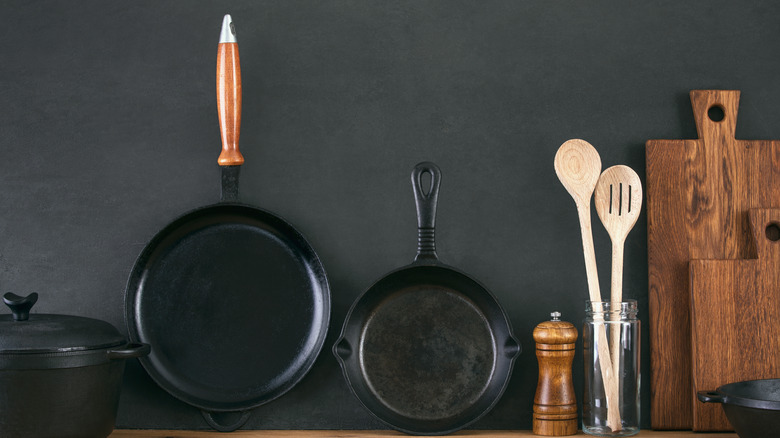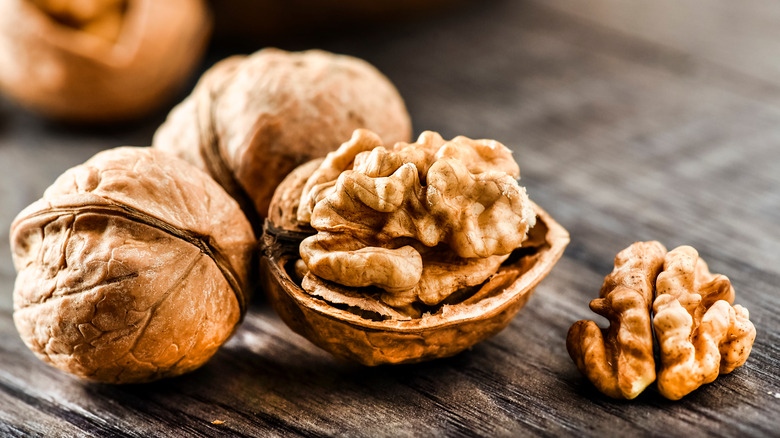The Simple Way To Crack Nuts With A Cast Iron Skillet
Cast iron skillets are the jack-of-all-trades as far as kitchen tools go. Heavy-duty cookware, they're made entirely of cast iron, but sometimes can be available with enamel coating. One of those fixtures that every cook should have, cast iron skillets have all sorts of practical uses from creating deep-dish pizzas and homemade tortillas to using it as a weight for smash burgers and draining water from tofu. Cast iron skillets can even help you crack a nut or two.
This versatility in the kitchen is largely in part to their level of seasoning. America's Test Kitchen explains that the more you cook with cast iron skillets, the more they develop a natural non-stick coating, also known as seasoning. But aside from its non-stick benefits, cast iron cookware is also amazing at maintaining and distributing heat, making it the ideal pan for searing and browning.
Although a cast iron skillet can last a lifetime, Better Homes & Gardens notes that this is only true with proper care: Rinse, dry, oil and leave it alone. But there does come a point when your cast iron skillet may have seen one too many stovetop casseroles. At the sign of cracking or warping, Taste of Home explains that it's best to ditch your pan. But until then, don't be afraid to think outside the box and put that skillet to use in a variety of ways, namely cracking nuts.
Do the skillet smash
Nutcrackers are the obvious choice when dealing with whole walnuts, almonds, or Brazil nuts. Consisting of two wood or metal hinged levers, all you need to do is place a nut in between and squeeze. However, in the absence of a nutcracker, you have options. While some nuts like pistachios can be cracked by hand, other shelled nuts like pecans can be a bit tricker. Cue: the (very multipurpose) cast iron skillet.
According to Eat This, Not That, you can simply place nuts on a cutting board and whack them open under the force of your cast iron skillet. The perfect solution when you're in a pinch, just remember to use both hands on the skillet's handle to minimize the risk of any wrist injuries.
Want to take it a step further? Once you've successfully managed to remove the nuts from their shell, you can also use your skillet to "chop" them. Cuisine at Home recommends ditching the knives and instead placing nuts (in a zip-lock bag) on a cutting board and tapping a few times with a tool like a meat mallet — or in this case, a cast-iron skillet.

